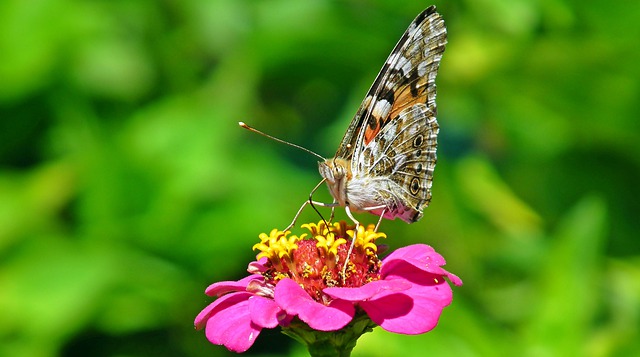
For a long time, I thought planting flowers was a pointless and frivolous gardening activity. Sure, they looked nice, but I was much more interested in growing food. Being able to grow frequently eaten foods such as lettuce, tomatoes, and arugula, meant that my grocery bills were lower, and I was even able to share excess produce with friends and family. Growing produce is still the focus of my gardening efforts, but now, I put equal effort into cultivating a balanced ecosystem that includes flowering plants.
Why plant flowers?
Aesthetic: There’s no denying that a patch of flowers around the garden looks beautiful. Well placed flowering plants pull together an outdoor space and really allow it to shine. A few containers of brightly colored gerberas on my back deck add a look I couldn’t otherwise achieve with simple greenery.
Attract pollinators: Flowers are an essential food source for many pollinators, and the colorful blooms will bring bees and other buzzing beneficial insects to the fray. Pick native flowering plants, and each time you step into your outdoor space, you’ll notice that your garden is vibrating with energy.
Attract predatory insects: Some flowering herbs and plants also attract predatory insects that can help you take a bite out of pest problems — and even avoid them altogether. Catmint, for instance, attracts lacewing insects, which in turn devour pests such as aphids and Japanese beetles. The tiny flowers on this herb also attract bees.
Enjoy cut flowers for free: If you’re anything like me, you love having a bouquet of fresh-picked flowers on your coffee table or kitchen windowsill. It’s a beautiful way to bring the outdoors inside, but buying plants from a flower shop is an expensive purchase that most frugal gardeners aren’t able to afford. Even those with a sufficient budget to buy cut flowers are wary of spending money on this type of expense. Planting flowers in your garden allows you to have a steady supply of cut flowers for your home. My favorite are zinnias. Start a few indoors, transplant in the spring and in mid- to late summer you’ll be rewarded with a prolific patch of delicate and colorful blooms.
Annual versus perennial
Plant a variety of flowers including perennial and annual varieties to ensure you have a varied array of blooms. I like to cover the bulk of my flower-designated areas with perennials since they’re low maintenance and don’t require me to purchase new seed each year. I do enjoy planting a few annual varieties (zinnias, for example), though. Don’t be afraid to ask nursery employees for suggestions on what to plant.
When in doubt, pick drought-tolerant perennials, and you can enjoy a flowery display without too much effort!

Steph Coelho is a freelance writer gardening in zone 5b. She is a certified Square Foot Gardener and has taught various garden-related workshops. When she’s not digging in the dirt or writing, she’s cooking up fresh produce, running, or listening to her favorite podcasts.
Leave a Reply